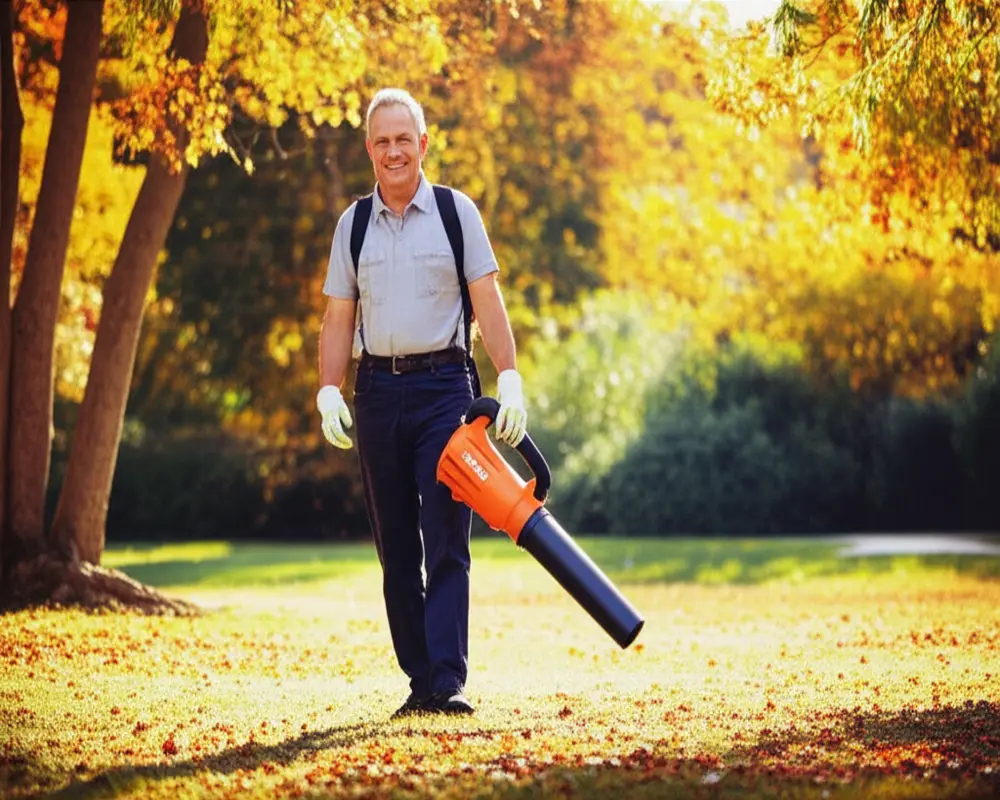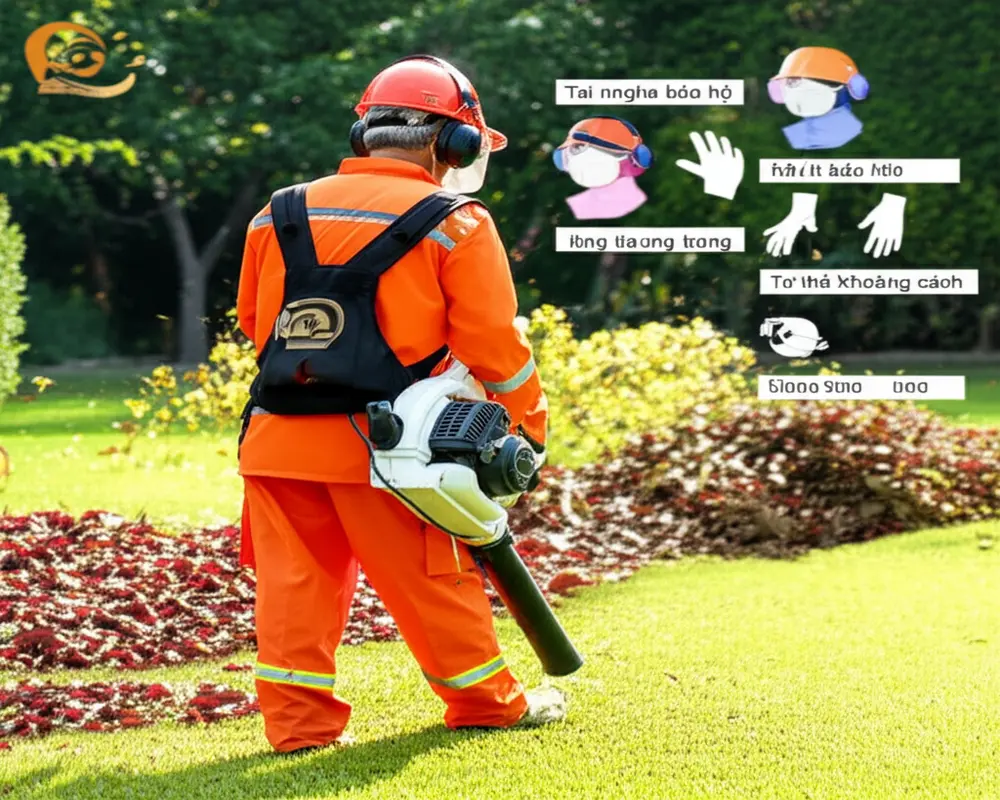Leaf Blower for Seniors: Lightweight & Easy to Use
Introduction
Maintaining a tidy yard should not be a physically taxing chore for seniors. This article aims to guide seniors, their caregivers, and family members in selecting leaf blowers for seniors that emphasize reducing physical strain without compromising efficiency. The core focus is on safety, ergonomics, and simplicity of operation.
Key criteria include lightweight construction, balanced weight distribution, low vibration, effortless starting mechanisms, and portable cordless options. These factors together create a safer and more manageable yard work experience for seniors.
As we approach 2025, advancements in battery technology have made battery-powered leaf blowers quieter and more powerful, while innovations in ergonomic design have minimized user fatigue. This guide highlights these improvements to help seniors enjoy yard work with ease and confidence.

Why a Senior-Friendly Leaf Blower Matters
Seniors face unique physical challenges such as reduced back strength, shoulder mobility, wrist flexibility, and grip strength. Conditions like arthritis and decreased endurance make it essential that leaf blowers are designed with these limitations in mind. The weight and balance of the tool greatly affect how long it can be used comfortably without causing strain or injury.
Ergonomic designs with soft-grip handles, adjustable lengths, and two-hand operation options help reduce fatigue. Some models include cruise control features, allowing seniors to maintain airflow without continuous grip pressure, further easing physical demands.
Mobility and safety are paramount. Cordless leaf blowers or those with extended reach reduce the risk of tripping over cords. For corded models, proper cord management is crucial to prevent accidents.
Noise levels also impact comfort and neighborhood relations. Quieter operation contributes to a more pleasant experience, while simplified maintenance suits seniors who prefer fewer mechanical components.
Compared to rakes or traditional gas blowers, senior-friendly leaf blowers improve safety and precision, especially when working on uneven terrain, helping seniors clear leaves effectively without overexertion.
Your Senior-Specific Buying Guide: Key Factors to Consider
Power Source
Choosing the right power source is fundamental. The main types include battery-powered (cordless), corded electric, and gas-powered leaf blowers. Each has distinct advantages and limitations.
Battery-Powered (Cordless)
Battery-powered leaf blowers are extremely lightweight and offer instant start with no cords to manage. They operate quietly with low vibration and produce zero emissions, requiring minimal maintenance. These features make them ideal for most seniors, especially those with small to medium yards prioritizing mobility and ease of use.
The downsides include limited run time per charge, charging duration, and a higher initial cost. However, improved battery technology in recent years has extended operational time and reduced charging periods significantly.
Corded Electric
Corded electric blowers are very light and provide consistent power with unlimited run time. They start instantly and are relatively low maintenance and affordable. The primary drawbacks are the limited reach due to cord length, potential trip hazards, and the need for an outdoor power outlet.
This option suits seniors with small yards, patios, or driveways near a power source.
Gas-Powered
Gas-powered leaf blowers offer the highest power and runtime with full mobility. However, they are generally the heaviest and loudest, with high vibration levels that can exacerbate fatigue or discomfort. Starting often requires a pull cord, and maintenance is more involved, including fuel mixing and emissions concerns.
For seniors, gas blowers are usually not recommended unless they feature electric start and low weight for heavier-duty tasks.
Weight & Balance
Leaf blowers under 6 to 8 pounds (about 2.7 to 3.6 kilograms) are preferable for seniors to reduce arm and shoulder strain. Well-balanced blowers distribute weight evenly, enhancing maneuverability and reducing fatigue during extended use.
Ergonomics & Handle Design
Look for models with soft-grip handles that cushion the hands and reduce vibration transmission. Adjustable length tubes accommodate different user heights and postures. Auxiliary handles and two-hand operation options provide extra control and lessen muscle strain. Some leaf blowers feature cruise control, maintaining airflow without constant trigger pressure, which is valuable for seniors.
Starting Mechanism
Push-button starts are ideal for electric and battery models, requiring minimal effort. For gas blowers, electric start or easy-pull mechanisms are preferable to avoid the physical demand of traditional pull-start systems.
Variable Speed & Power Control
Adjustable airflow allows seniors to tailor the power for delicate tasks like clearing light debris or tougher leaf conditions, conserving battery life and reducing unnecessary strain.
Noise Level (dB)
Models emitting under 65 decibels (dB) are recommended to protect hearing and minimize neighborhood disturbance. Quieter blowers enhance comfort and make yard work more enjoyable.
Vibration Reduction Technology
Anti-vibration systems, rubberized grips, and dampeners help reduce hand-arm vibration syndrome risks, a significant consideration for seniors concerned with joint health.
Multi-Functionality (Blower/Vac/Mulcher)
Some leaf blowers also vacuum and mulch leaves, which can be convenient but may add weight and complexity. Seniors should weigh the benefits of multifunctionality against the added effort required.
Safety Features
Stable bases, easily accessible on/off switches, motor cut-offs, and protective guards enhance safety. These features help prevent accidents and provide peace of mind.
Price & Value
Balance features with budget constraints. Consider long-term ownership costs including maintenance, battery replacements, and energy consumption to find the best value.
Practical Considerations
Storage ease, portability, weather resistance, and cleaning simplicity are essential for seniors who prefer low-maintenance tools.
Our Top Picks: Best Leaf Blowers Tailored for Seniors (In-Depth Reviews)
Our selections are based on manufacturer specifications, extensive user reviews focusing on seniors, expert evaluations, and hands-on testing emphasizing weight, balance, ease of start, vibration reduction, and noise levels. Safety and comfort outcomes are paramount.

Overall Best Lightweight & Easy-to-Use: Product A (Battery-Powered)
This model offers exceptional balance and is among the lightest in its class. Intuitive controls and instant-on start make it ideal for seniors seeking effortless operation. The trigger requires minimal finger pressure, reducing hand fatigue.
Best Value for Seniors: Product B (Corded or Battery)
Combining power and affordability, this blower performs well without compromising on weight. Its ergonomic design and user-friendly features provide great comfort for its price range.
Best for Arthritis & Hand Comfort (Lowest Vibration): Product C (Battery-Powered)
Equipped with advanced anti-vibration technology and an ergonomic grip, this blower minimizes hand strain, making it suitable for seniors with arthritis or sensitive joints.
Best for Medium-Sized Yards (Extended Battery Life): Product D (Battery-Powered)
With a long-lasting battery and robust airflow, this blower handles medium yard sizes efficiently without excessive weight.
Best Corded Option for Small Patios/Driveways: Product E (Corded Electric)
Ultra-lightweight with consistent power, this model requires no battery charging and suits small outdoor spaces close to power sources.
Best Quiet Option: Product F (Battery or Corded)
Designed for low noise emissions, this blower ensures hearing comfort and good neighbor relations, ideal for noise-sensitive environments.
Best for Mobility Issues: Product G (Battery-Powered)
Featuring an ultra-light frame, easy grip, and split handle design, this blower accommodates seniors with limited mobility or grip strength.
Maximizing Comfort & Safety: Essential Tips for Senior Leaf Blower Users

Proper technique is crucial. Maintain good posture, using your core muscles for sweeping motions and avoiding twisting motions that strain the back. Handle awkward angles carefully to prevent injury.
Plan for frequent short breaks to stave off fatigue. Use protective gear such as hearing protection—even if using quieter models—safety glasses, and sturdy footwear to guard against debris and slips.
For corded models, keep cords well-managed and clear of your walking path to avoid tripping hazards. Before starting work, ensure the path is clear, batteries are fully charged, fuel tanks are full, air intakes are free of debris, and safety guards are in place.
Avoid using leaf blowers on wet leaves or slippery surfaces to reduce fall risk. Check weather conditions for safe and optimal leaf blowing sessions.
Maintenance & Longevity: Keeping Your Senior-Friendly Blower Running Smoothly
Battery care is essential: charge batteries fully before storage, keep them in cool, dry places, and understand their expected lifespan. Regularly inspect and clean battery contacts.
Corded models require cord inspections for wear and proper winding to prevent damage. Clean air vents and nozzles regularly to maintain airflow and performance.
For gas models, off-season storage includes draining fuel, lubricating parts, and checking spark plugs to ensure readiness for the next season.
Basic troubleshooting includes checking for starting issues, low power, or clogged intakes. Guidance for these common issues can be found at Leaf Blower Won’t Start.
Frequently Asked Questions (FAQs) for Seniors
- What is the ideal weight for a leaf blower for seniors?
- Leaf blowers weighing under 6 to 8 pounds (2.7 to 3.6 kg) are ideal to reduce fatigue and strain.
- Is a battery-powered leaf blower powerful enough for heavy-duty tasks?
- Modern battery-powered blowers offer sufficient power for small to medium yards, but heavy-duty tasks may require gas-powered models with electric start.
- Can I use a leaf blower if I have arthritis or back pain?
- Yes, by selecting ergonomic models with low vibration and lightweight design, and using proper technique and breaks, seniors with arthritis or back pain can use leaf blowers comfortably.
- How do I assess vibration reduction in a unit?
- Look for models featuring anti-vibration technology, rubberized grips, and check user reviews for feedback on vibration comfort.
- How long does a typical battery last for senior-friendly models?
- Battery life varies but generally ranges from 20 to 60 minutes per charge, depending on power settings and battery capacity.
- Are there leaf blowers that also vacuum and mulch—and are they suitable for seniors?
- Yes, multifunction models exist but may be heavier and more complex. Seniors should consider their strength and preferences before choosing these.
Conclusion: Enjoying a Tidy Yard with Ease and Peace of Mind
Choosing the right leaf blower for seniors transforms yard maintenance from a draining chore into a manageable and safe activity. Senior-friendly blowers offer the advantages of lighter weight, easier starting, reduced vibration, quieter operation, and safer handling.
By prioritizing comfort, safety, and practical features, seniors can maintain their yards effectively while preserving their health and energy. This season, reclaim your outdoor space with a leaf blower designed specifically for your needs.
Explore more about maintaining garden tools and ergonomics at Hand Cultivator Ergonomics Study.
For safety guidelines on power equipment, visit the U.S. Consumer Product Safety Commission (CPSC).
Learn about vibration-related health risks from the National Institute for Occupational Safety and Health (NIOSH).

